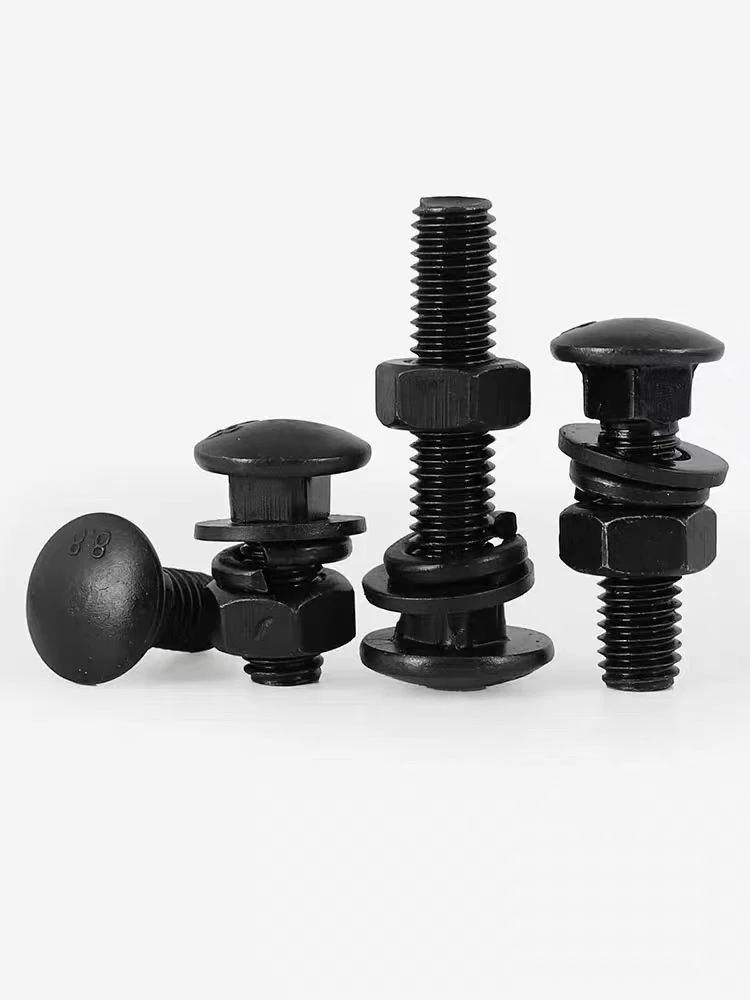

metric stud bolts
Kas . 21, 2024 04:00 Back to list
metric stud bolts
Understanding Metric Stud Bolts A Comprehensive Guide
In the world of mechanical engineering and construction, the importance of high-quality fastening components cannot be overstated. Among these, metric stud bolts are gaining increasing attention due to their versatility and reliability. This article delves into the specifications, applications, and advantages of metric stud bolts, offering insights that can benefit both engineers and DIY enthusiasts.
What is a Metric Stud Bolt?
A metric stud bolt is a type of fastener that consists of a cylindrical rod threaded on both ends, with a smooth, unthreaded middle section. They are designed to be used in conjunction with nuts and are available in various sizes, diameters, and lengths, adhering to the metric system. Typically made from materials such as steel, stainless steel, and alloyed steel, their properties can vary depending on the intended use.
Specifications of Metric Stud Bolts
Metric stud bolts are identified by a set of specifications, which typically includes
1. Diameter This is the measurement across the threads and is commonly expressed in millimeters (mm). 2. Length Measured from the end of one thread to the end of the opposing thread. 3. Thread Pitch The distance between threads, indicating how tightly or loosely the threads are engaged. 4. Strength Grade This indicates the tensile strength and yield strength of the bolt material, with common grades ranging from 4.6 to 12.9.
The most common metric standards for stud bolts include ISO 4017 and DIN 931, among others. These standards ensure consistency and reliability across different manufacturing processes.
Applications of Metric Stud Bolts
metric stud bolts

Metric stud bolts are utilized in a variety of applications, showcasing their adaptability. Common uses include
- Construction In steel structures and buildings, metric stud bolts provide reliable connections that can withstand heavy loads. - Automotive Industry They are commonly found in engines, where high strength and resistance to fatigue are crucial. - Machinery Assembly Metric stud bolts are often used to assemble machinery parts that require precise alignment. - Marine Applications Used in boats and ships, they resist corrosion, especially when made from stainless steel.
Their design allows for the even distribution of load, which is essential in preventing loosening over time, thereby enhancing safety in applications where bolts are subjected to significant stress.
Advantages of Using Metric Stud Bolts
The choice of metric stud bolts comes with several advantages
1. Standardization The metric system is widely used globally, making metric stud bolts a universal choice for international projects and procurement. 2. Variety With a wide range of sizes and materials available, one can find metric stud bolts suitable for different applications, from everyday household tasks to complex industrial uses. 3. Enhanced Performance Their design and the quality of materials used ensure high performance in terms of strength and durability. 4. Ease of Use Stud bolts can be easily tightened or loosened, making them user-friendly for both professionals and hobbyists.
Conclusion
In conclusion, metric stud bolts are essential components in various sectors, ensuring reliable and effective fastening solutions. Their standardized dimensions, combined with their strength and versatility, make them a preferred choice in mechanical and construction applications. Understanding their specifications and applications is critical for anyone involved in assembly or construction processes, as it helps in selecting the right fasteners for the job, ensuring safety and longevity in any assembly. Whether you are a seasoned engineer or a DIY novice, the metric stud bolt is a small yet mighty tool that can enhance your work significantly.
Latest news
-
Hot Dip Galvanized Bolts-About LongZe|High Strength, Corrosion Resistance
NewsJul.30,2025
-
High-Strength Hot Dip Galvanized Bolts - Hebei Longze | Corrosion Resistance, Customization
NewsJul.30,2025
-
Hot Dip Galvanized Bolts-Hebei Longze|Corrosion Resistance&High Strength
NewsJul.30,2025
-
High-Strength Hot-Dip Galvanized Bolts-Hebei Longze|Corrosion Resistance&High Strength
NewsJul.30,2025
-
Hot Dip Galvanized Bolts-Hebei Longze|Corrosion Resistance&High Strength
NewsJul.30,2025
-
Hot Dip Galvanized Bolts - Hebei Longze | Corrosion Resistance, High Strength
NewsJul.30,2025

